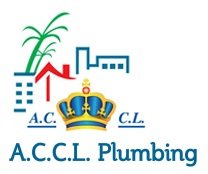Plumbing is an essential system in every home, providing clean water for drinking, cooking, and hygiene, while also removing wastewater and sewage. Understanding the basics of plumbing can help homeowners identify and fix common issues, saving time and money. In this article, we’ll cover the fundamental concepts of plumbing and provide tips for beginners.
Understanding the Plumbing System
– Water Supply: The water supply system brings fresh water into the home through pipes, typically connected to a municipal water supply or a well.
– Drainage: The drainage system removes wastewater and sewage from the home through pipes, which flow into the sewer system or a septic tank.
– Fixtures and Appliances: Fixtures like sinks, toilets, and showers, and appliances like dishwashers and washing machines, are connected to the plumbing system.
Basic Plumbing Components
– Pipes: Pipes are the network of tubes that carry water and wastewater throughout the home. Common pipe materials include copper, PVC, and PEX.
– Fittings: Fittings are used to connect pipes, change direction, or adapt to different pipe sizes.
– Valves: Valves control the flow of water in the plumbing system. Common types include shut-off valves, check valves, and ball valves.
– Fixtures and Fixture Installation: Fixtures like faucets, toilets, and sinks are installed and connected to the plumbing system.
Common Plumbing Issues
– Leaks: Leaks can occur due to worn-out seals, loose connections, or damaged pipes.
– Clogs: Clogs can occur due to hair, grease, or other debris accumulating in pipes.
– Low Water Pressure: Low water pressure can be caused by mineral buildup, clogged aerators, or issues with the water supply.
Tips for Beginners
– Know the Location of Shut-Off Valves: Knowing the location of shut-off valves can help you quickly turn off the water supply in case of an emergency.
– Use the Right Tools: Having the right tools, such as a pipe wrench and pliers, can make plumbing tasks easier and safer.
– Take Safety Precautions: Always turn off the water supply and electricity before starting a plumbing project, and wear protective gear like gloves and safety glasses.
Conclusion
Understanding the basics of plumbing can help homeowners identify and fix common issues, saving time and money. By knowing the components of the plumbing system, common issues, and tips for beginners, you’ll be better equipped to tackle plumbing tasks and maintain your home’s plumbing system.

